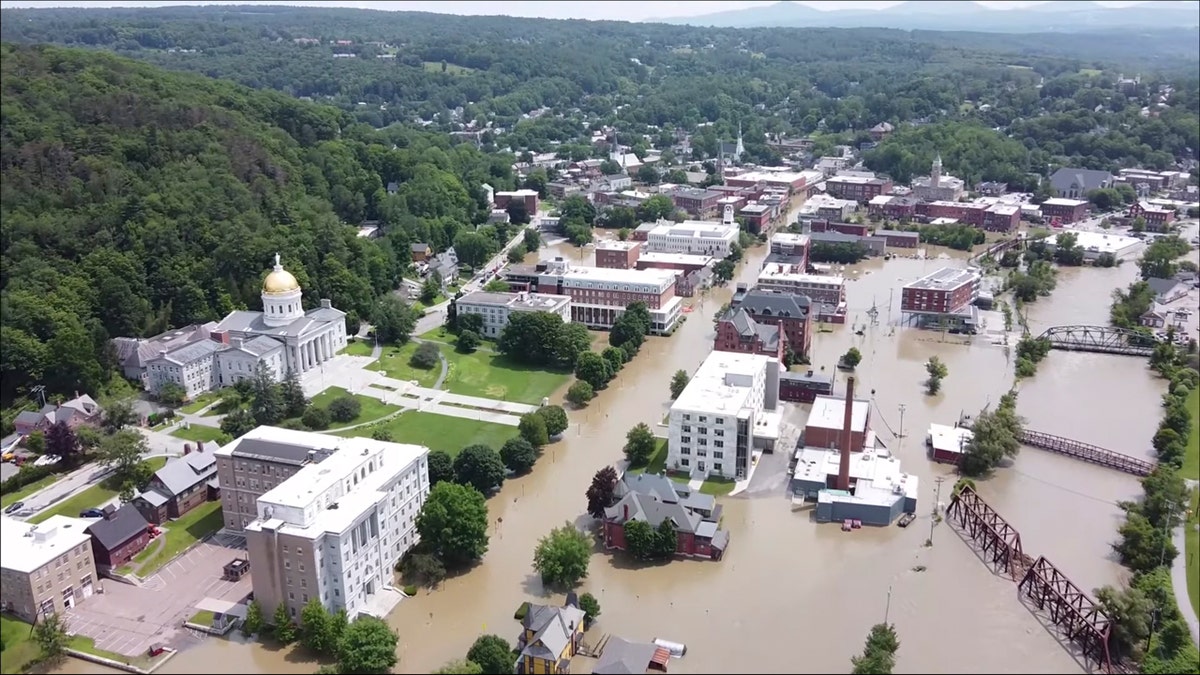Vermont residents spent Friday grappling with the aftermath of devastating floods, diligently working to dry out homes and businesses. The widespread damage is considered the worst the state has seen since 1927, exceeding even the destruction caused by Tropical Storm Irene in 2011. Adding to the challenge, further rainfall is predicted for Sunday and Tuesday, raising concerns about additional damage.
Thousands of homes and businesses were impacted by the storms earlier this week, which dumped an unprecedented amount of rain across the region in just a few days. At the peak of the storm, roughly 14,000 customers were without power. Governor Phil Scott acknowledged the uncertainty surrounding the upcoming weather systems, emphasizing the need for continued vigilance.
Tragically, the flooding has claimed one life in Barre, where 63-year-old Stephen Davoll drowned in his home. This marks the second flood-related fatality in the Northeast this week, following the death of a woman swept away by floodwaters in Fort Montgomery, New York. Senator Peter Welch expressed condolences, highlighting the profound impact of this loss on the community.
President Biden has approved a major disaster declaration for Vermont, paving the way for federal aid to support recovery efforts. While many communities have reported their needs to emergency management officials, several dozen remain out of contact. National Guard troops have been deployed to establish communication and assess their situations.
Beyond residential and commercial properties, the agricultural sector has also suffered significant losses. The flooding arrived shortly after a damaging May freeze, compounding the difficulties faced by farmers. Agriculture Secretary Anson Tebbetts anticipates substantial damage to crops and livestock feed, noting that much of Vermont's fertile farmland is located in vulnerable river valleys. The total cost of the damage is still being assessed.

Drone footage reveals the extent of the flooding in Montpelier, Vermont, on July 11, 2023. (Vermont Agency of Agriculture, Food and Markets via AP)
Amidst the devastation, stories of resilience and community support have emerged. Thousands of Vermonters, businesses, and organizations have stepped forward to offer assistance. Governor Scott expressed gratitude for this outpouring of support, recognizing its crucial role in the recovery process.
In Marshfield, the local village store has become a hub for relief efforts. It served as a temporary shelter during the height of the flooding and is now a distribution point for clean water due to damage to the town's water main. Efforts are ongoing to identify and assist individuals still in need of support.
Statewide, over 5,200 volunteers have registered through official channels to contribute to relief work. This number doesn't reflect the numerous local initiatives and informal networks also providing vital assistance. Volunteers are offering a wide range of services, from transportation for medical appointments to general cleanup and debris removal.
In Ludlow, Calcutta's restaurant is preparing meals for first responders, volunteers, and those displaced by the floods. The restaurant has also set up a temporary shelter with cots, water, and essential supplies. The road to recovery will be long, but the collective efforts of Vermonters demonstrate a strong spirit of community and resilience.
Comments(0)
Top Comments